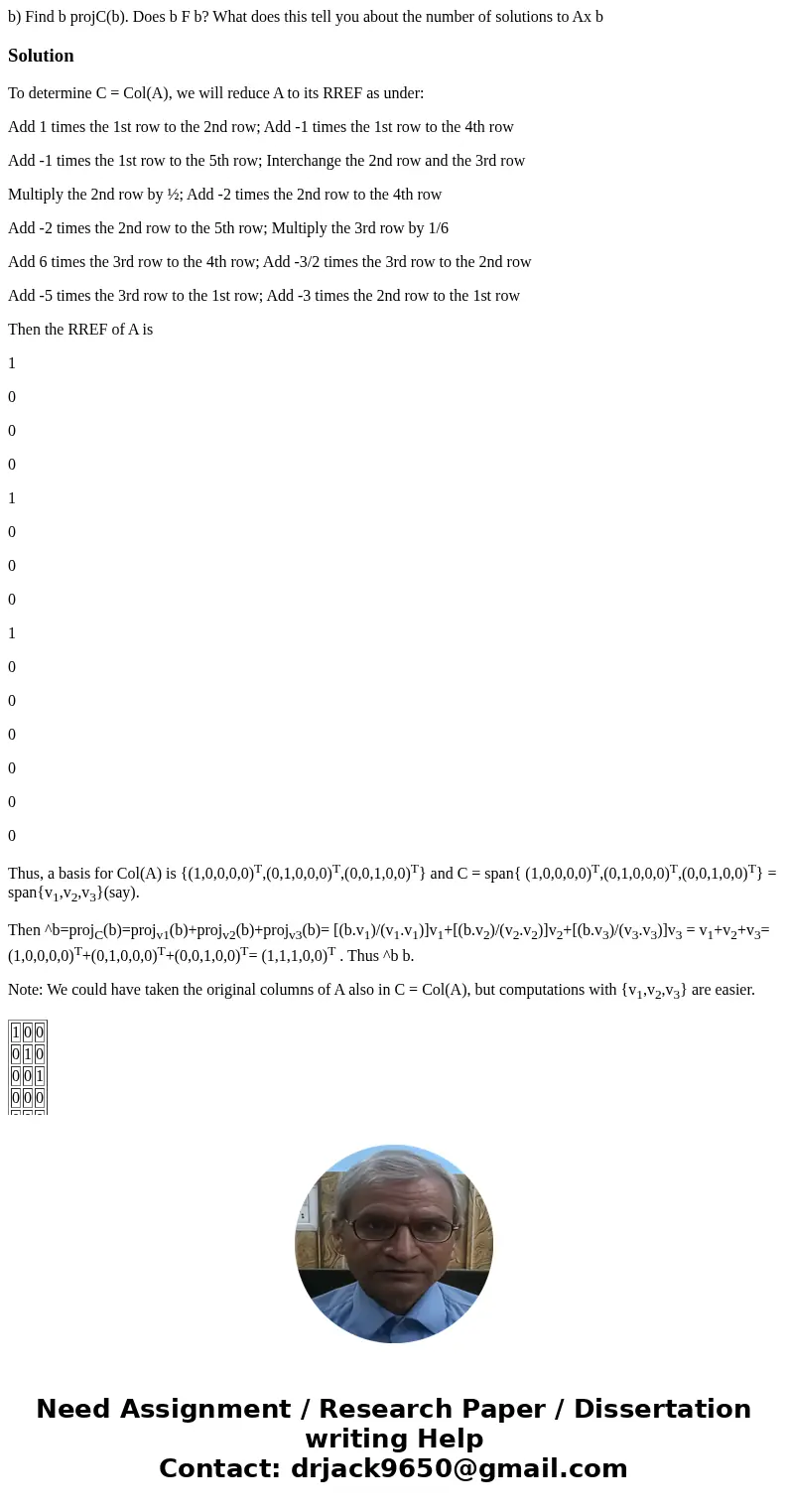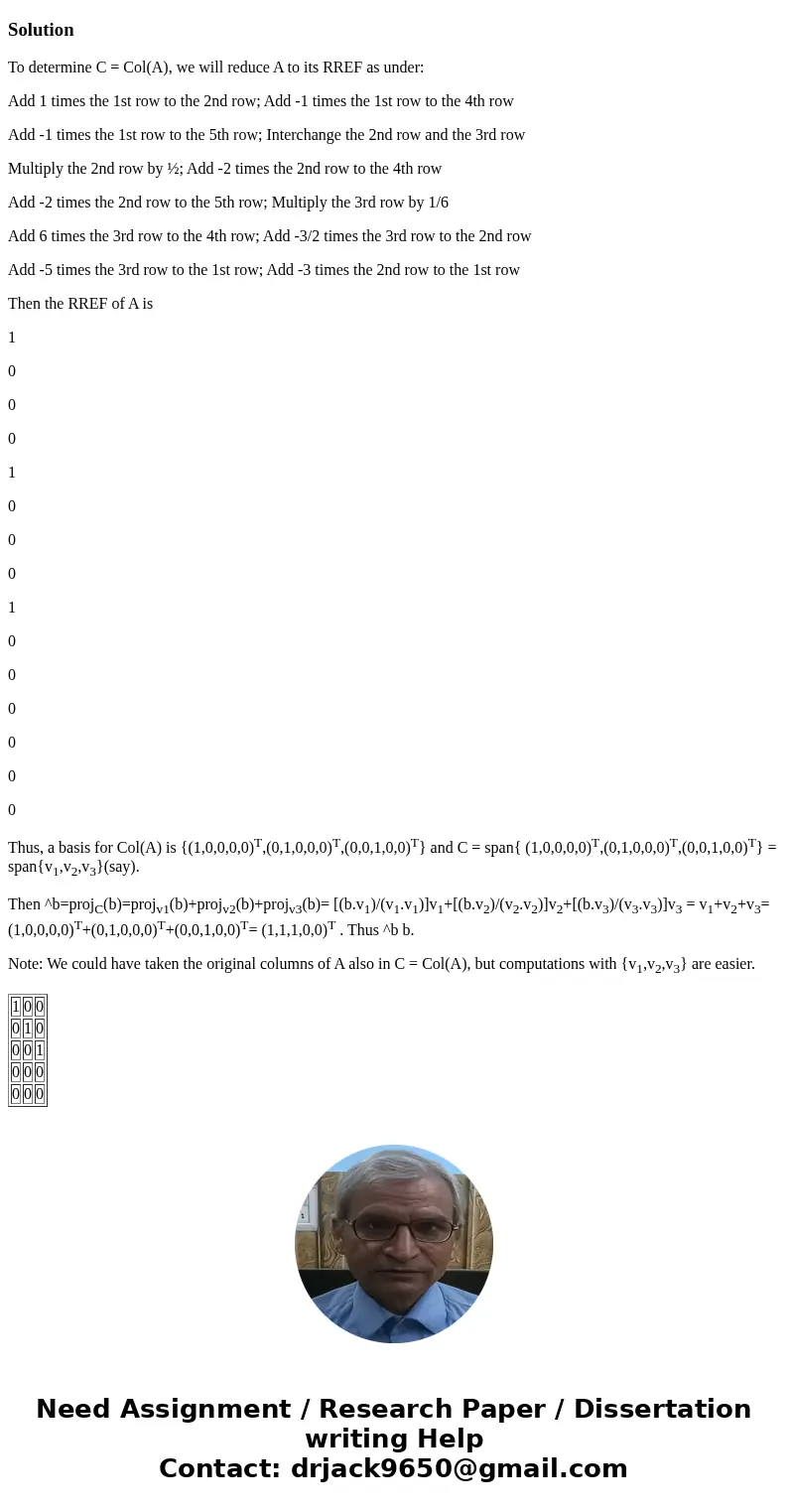b Find b projCb Does b F b What does this tell you about the
Solution
To determine C = Col(A), we will reduce A to its RREF as under:
Add 1 times the 1st row to the 2nd row; Add -1 times the 1st row to the 4th row
Add -1 times the 1st row to the 5th row; Interchange the 2nd row and the 3rd row
Multiply the 2nd row by ½; Add -2 times the 2nd row to the 4th row
Add -2 times the 2nd row to the 5th row; Multiply the 3rd row by 1/6
Add 6 times the 3rd row to the 4th row; Add -3/2 times the 3rd row to the 2nd row
Add -5 times the 3rd row to the 1st row; Add -3 times the 2nd row to the 1st row
Then the RREF of A is
1
0
0
0
1
0
0
0
1
0
0
0
0
0
0
Thus, a basis for Col(A) is {(1,0,0,0,0)T,(0,1,0,0,0)T,(0,0,1,0,0)T} and C = span{ (1,0,0,0,0)T,(0,1,0,0,0)T,(0,0,1,0,0)T} = span{v1,v2,v3}(say).
Then ^b=projC(b)=projv1(b)+projv2(b)+projv3(b)= [(b.v1)/(v1.v1)]v1+[(b.v2)/(v2.v2)]v2+[(b.v3)/(v3.v3)]v3 = v1+v2+v3= (1,0,0,0,0)T+(0,1,0,0,0)T+(0,0,1,0,0)T= (1,1,1,0,0)T . Thus ^b b.
Note: We could have taken the original columns of A also in C = Col(A), but computations with {v1,v2,v3} are easier.
| 1 | 0 | 0 |
| 0 | 1 | 0 |
| 0 | 0 | 1 |
| 0 | 0 | 0 |
| 0 | 0 | 0 |


 Homework Sourse
Homework Sourse